Eye-Witness To The Beginning, And The End, Of The Space
Shuttle
By Wes Oleszewski
When the July 8th launch date for STS-135, the final flight of
the Space Shuttle, was announced I had the feeling I was screwed on
covering the launch. After a quick look at my calendar, I was
sure… I was screwed. The family summer vacation road-trip
that we had been planning for nearly a year was scheduled to depart
on that same date. So, the final launch of the Shuttle would take
place while I was in the family van headed up I-70. It was a pretty
depressing thought, since I had been there for the very first
Shuttle launch and I had recently held the hope of attending the
final launch. Still, plans had been made, hotel reservations were
in place and a family reunion was on the
schedule. NASA’s plans had simply conflicted with those
of my family.
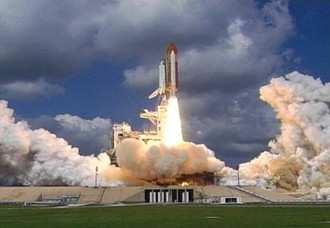
I did my best to not mope in the open, after all, this vacation
had been my idea in the first place. The best that I could do was
wish for a scrub that would last a few weeks. An issue involving
the Main Fuel Valve on one of the Main Engines looked promising for
a while, but it was easily corrected at the pad with no impact on
the launch date. I came shuffling downstairs from my office and
mentioned to my wife that the problem was going to be cleared.
After a quarter of a century together, she sensed what I was trying
to hide. “Ya’ know,” she suggested, “if we
modified our travel plans just a little bit you could go down for
that launch.” I replied with some doubt, but she insisted,
“You were there for the first one and it’s only
appropriate that you should be there for the last one. I mean, how
many people can say that?” There are lots of times when I
know that I’ve married the right lady, and this was yet
another one. “Sort of an alpha-omega,” I replied with a
smile referring to the Greek letters symbolic for the first and the
last. “Exactly.” she grinned. In less than a half hour
our vacation was slightly altered and I had my plane tickets
booked.
As the year 1981 began it had been five and one half years since
the last Americans had been launched from the Kennedy Space Center.
The psyche of the American public had been shoved through the
turmoil of the late 60s and then dragged through the
“change” of the 70s. So, as STS-1 was prepared on Pad
39-A the prospect of the United States starting a new and
spectacular adventure in space quickly captured the imagination of
a pride-parched public. Over the previous half decade the news
media, having cut new sharp teeth on Watergate, had done their best
to highlight every fault and failure in the development of the
Shuttle. Most of the public, however, had been too dazzled by disco
balls to notice. By April of 1981 a real, flight ready, fully
functional Space Shuttle sat waiting on the pad as if to spite
its critics.
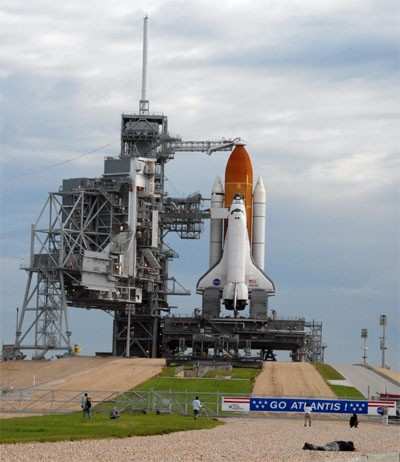
Camping out on the riverbank in Titusville prior to the launch
we all knew that we were there to witness history ... one way or
another. I knew that this launch would be the ultimate in
“all-up testing.” Such testing involved launching an
entire, amazingly complex vehicle, as a single working unit instead
of launching and testing one component at a time. This time,
however, unlike the Apollo Saturns which were all-up tested
unmanned, the Shuttle would be tested with astronauts aboard. It
was a pinnacle in flight test that will never again be attempted or
reached. A full chapter in aviation history was going to be written
right in front of us and that reality sunk in to a few of us more
than it did to most folks who were watching.
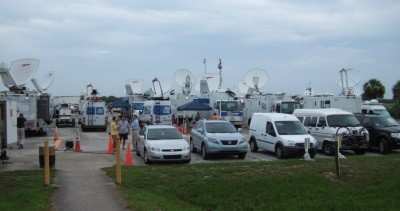
At Main Engine Start we saw the three Space Shuttle Main Engines
(SSME) ignite and come up to full thrust with perfection. This was
in spite of the media telling us about the numerous SSME failures
and even a few explosions that had taken place in development and
the implication that this could very well happen on STS-1. Then the
largest solid rocket boosters on earth ignited in precise unison-
again contrary to media implications of disaster. Raining fire
STS-1 gracefully arced into the morning sky with an earth-shaking
roar that awakened the American spirit. On the river bank we
screamed and shouted everything from “GO! BABY GO!” to
the “WOOOO!” of rebel yells. At SRB sep. an estimated
near-million people spontaneously broke into applause. We looked at
the smoke trail left by the SRBs with the feeling that this was the
start of something new- something big- something to be proud of.
Knowing spaceflight history like I did, I tempered that feeling
with the thought of “If only we can keep the
politician’s hands off of it.”
Living in Florida for most of the next decade I was able to
witness 17 of the next 25 launches, including the loss of the
Challenger. Although I was able to often see the launches up close,
sometimes my view was from Daytona Beach or the Embry-Riddle campus
or even the Ormond Beach Bridge. After 1986, my aviation career
took me far from KSC and the busy Shuttle spaceport. Still, when
NASA successfully recovered from the loss of the Challenger and the
only significant politician’s hands-on the program turned out
to be President Clinton directing the construction of an
“International” space station, I figured that the fleet
of orbiters would be flying far into my old age. After all, each
hand an individual 100 mission designed lifespan and each was only
flying about two or three missions per year. It looked as if John
Young had been correct when, after STS-1, he said that America was
in space to stay. We were both wrong.
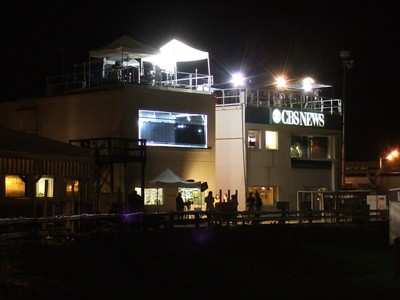
In a knee-jerk reaction to the loss of the Columbia in 2003,
President Bush directed that NASA must do three things. First, it
must set a course and develop vehicles to return to the moon and go
on to Mars. Second, it must retire the Shuttle by 2010. Third, it
must abandon the International Space Station by 1015. Then he
directed his Office of Management and Budget to short change NASA
by an annual amount for nearly $3 billion a year. This political
three card monte game doomed the shuttle and left open the door for
an anti-NASA president to later gut the agency. Enter Barack Obama
and the cancellation of the return to the moon and the vehicles to
replace the Shuttle. By allowing the shuttle program to die on the
Bush schedule, and by canceling its replacement, Obama could
successfully gut NASA’s human spaceflight program and reform
the agency into a federal think-tank.
Thus, the mission of STS-135 became the swansong of the Shuttle
program and perhaps may become the end of NASA’s human
spaceflight program as well. Arriving at the KSC press site on
launch morning was predicted to be “bittersweet” yet
for me it was more bitter than sweet. It was 4:30 in the morning
and I had planned my early arrival to beat the traffic. Although I
was successful in that, I found myself parked in the third row of
the over-flow and directly in front of a small gate leading through
the press site fence. The predawn morning was devoid of stars as a
sub-tropical weather system was smothering the space coast.
Although the press site was brightly lit, the chances of a launch
were quite dim as the weather seemed ready to force a scrub.
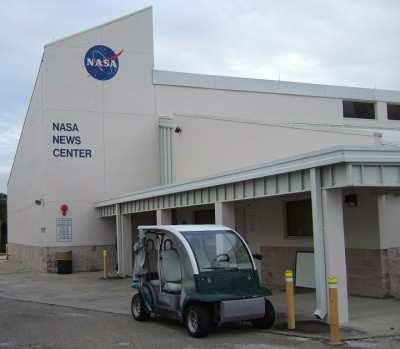
Normally, the press room is haunted by two basic categories of
reporters- what I like to describe as the “hardcores”
and the “meatpuppets.” The hardcores are the gang of
spaceflight media who are there for almost everything, Shuttle,
Falcon 9, Atlas, Delta, even Ares I-X. They are a bunch who can
bring up a technical question, bounce it around each other for a
few minutes and come up with the absolutely correct answer. They
know each other by name, face and reputation and I always feel
lucky to occasionally sit among them. The meatpuppets, on the other
hand, are the people assigned by their network to cover an event of
which they know almost nothing about. Of course they do such a task
all the time anyway so what’s the difference. Whether
covering a murder trial or an oil spill, it is all the same to
them. They get handed a few notes, look into the camera or
transcribe a press release and then they move on to the next
story.
I was only in the press room long enough to say hello to some of
the hardcores when the meatpuppet storm began. In short order media
from all over the world were squeezing into the press room or
setting up shop in assorted EZ-up tents outside. One of the
hardcores looked around the room and quietly said “I wish
they’d all go away and just let us who cover these things
cover it.” Then she pointed with her finger toward
individuals standing nearby as if able to be selecting people and
said, “You can stay, you can stay, you can
stay…” she pointed at me and paused for a second.
“Hey,” I quipped, “I was at X-Prize with
you… I have cred.” “Yeah,” she smirked,
“you can stay.” Whew.

At recent launches there has actually been a third category of
media that remained somewhat self-isolated; they were the
“Tweeters.” In a good P.R. move, NASA recognized the
effect that the cyber crowd can have on raising awareness of
Shuttle missions. In keeping with that they began to credential
persons who applied to come and simply Twitter about being at the
launch. Thus a group who collectively know about as much about
spaceflight as the average meatpuppet end up sitting at their
computers and describing their experiences in 140 words or less. A
crowd of these tweeters are thus placed into a huge white tent with
their computers. Oddly, since their greatest interest is tweeting,
you hardly ever see any of the tweeters around the press site. They
all stay in their tent with their computers. That is, with the
exception of when the astro-van drives past with the Shuttle crew
aboard. Then the tweeters storm from their tent in a massive geek
stampede to the roadway. There they stand and wave to the van.
It’s actually quite a frightening sight as this rush of
tweeters comes out of the tent. I happened to be walking across
their intended path when the STS-135 stampede took place and felt
compelled to run for my life! Once the astro-van passes, the
tweeters simply, and quickly funnel back into their tent to tweet
about the astro-van in 140 words or less.
No one at the press site really thought that there was much of a
chance for a launch on July 8th. We kept joking about being there
just to cover the scrub and asking what time everyone was coming
back tomorrow. The weather, however, had the last word and ended up
fooling even the hardcores. As the time arrived to come out of the
nine minute hold, the weather simply opened up into “Go
conditions.” We all came out of the press building as the
clock began counting beyond T-9:00 and we simply stood there
waiting. The normal “loop” that is broadcast over the
outdoor loudspeakers was fairly muted so the hold at T-:31 seconds
caught everyone off guard. One of the hardcores with a phone to his
ear blurted out that GOX vent hood did not show fully retracted. I
asked aloud toward no one, “Is there a procedure for
that?” someone nearby said “If they recycle
they’ll be out of the window.” Another hardcore blurted
out “They’ll confirm with a camera.” and someone
else said “They can do the hydraulic pressure too.”
Then, suddenly, the count resumed. Indeed they did have a procedure
for that. In less than a half a minute Space Shuttle lifted
majestically from the pad and roared into space for the final time
showing a great deal more grace than those who caused the program
to end.
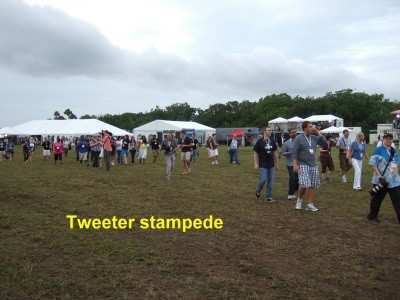
When it was all over the meatpuppets and their crews wrapped up
their gear and left as fast as they could. The rest of us, like the
crew from ANN, simply could not leave ... not yet anyway.
Personally, I hung around for nearly three hours as I found it hard
to get in my car and drive off of KSC. The hardcores milled around.
No one talked much about the finality of the launch. Mostly we just
hung out together as true hardcore space buffs. When I finally
could bring myself to leave I took a long look around. The pads,
the MLPs, the LCC, the VAB, all of the buildings- soon to be empty,
devoid of people, these were the things I considered. The huge
press site would soon be empty as well. All of the contractors who
dedicated their best years to the program now would see their
careers vanish like the smoke from the SRBs. This is it, this is
the end- those jobs, those careers and those people are gone and
they are not coming back. Unlike STS-1, when the launch represented
a new beginning and amazing things to come for this nation, STS-135
represents the opposite. It represents the end of fantastic things
and shows the direction that our so-called leaders have sent this
nation in- and that is certainly not something to be proud of.
Thus, we have the omega.
 Aero-News: Quote of the Day (04.28.25)
Aero-News: Quote of the Day (04.28.25) ANN's Daily Aero-Term (04.28.25): Decision Altitude (DA)
ANN's Daily Aero-Term (04.28.25): Decision Altitude (DA) ANN's Daily Aero-Linx (04.28.25)
ANN's Daily Aero-Linx (04.28.25) Airborne-Flight Training 04.24.25: GA Refocused, Seminole/Epic, WestJet v TFWP
Airborne-Flight Training 04.24.25: GA Refocused, Seminole/Epic, WestJet v TFWP Aero-News: Quote of the Day (04.29.25)
Aero-News: Quote of the Day (04.29.25)









